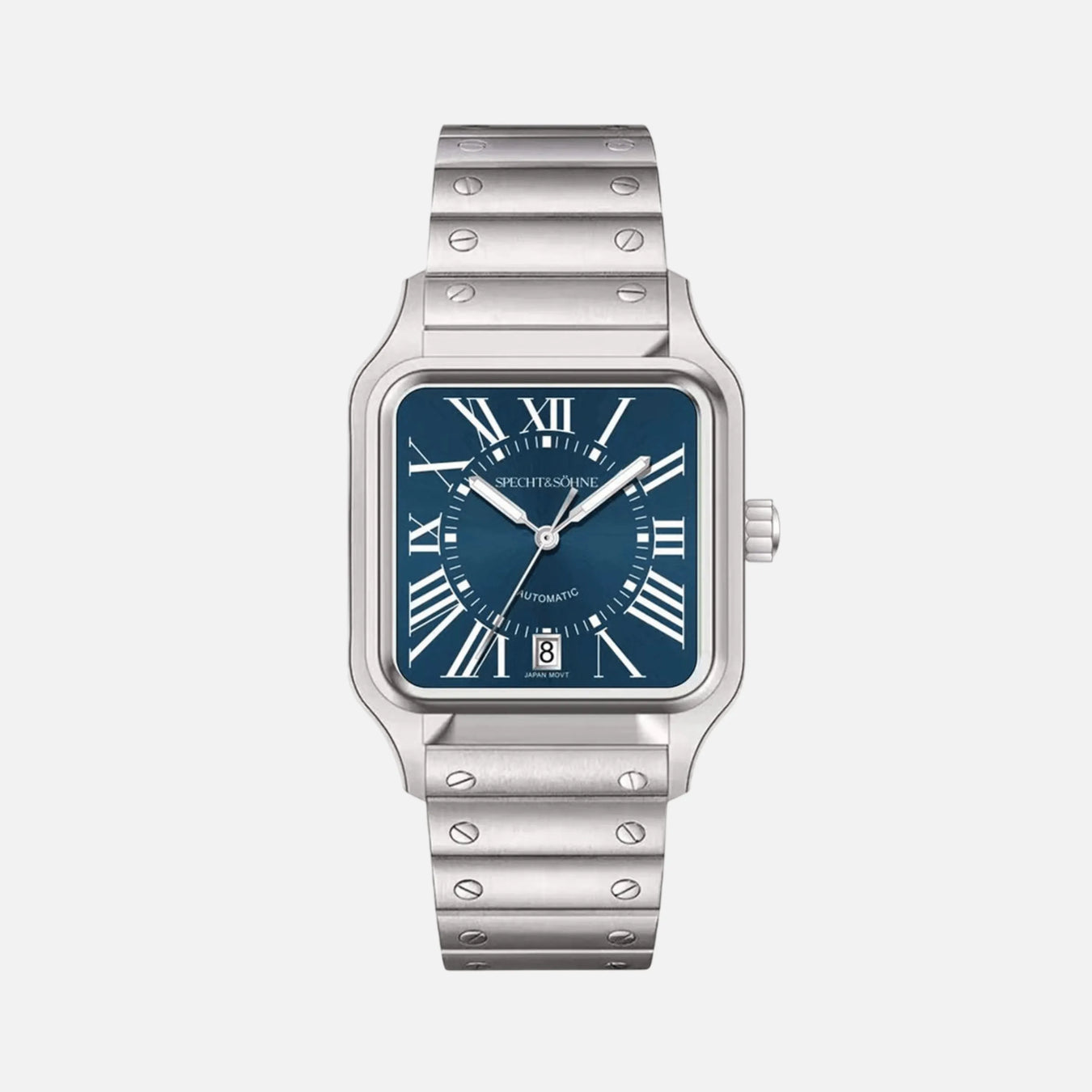
Join the Fray: Navigating Chess Tournaments for Players of Every Skill Level
Introduction to the Competitive World of Chess Tournaments
The competitive arena of chess tournaments presents an exhilarating challenge that beckons players across all echelons of expertise. From the novice making their initial foray with a set of wooden chess pieces art 809125 in hand to the grandmasters contemplating strategies over luxury chess pieces, the tournament circuit is nothing short of diverse and dynamic.
Participants can find themselves engrossed in intense battles that stretch their cognitive boundaries, each match a cerebral dance demanding precision, foresight, and psychological acumen. With a myriad of formats, including classical, rapid, and blitz chess, competitors must adapt their playstyle to not only the game at hand but also the tempo dictated by the ticking clock.
Nestled in the heart of these tournaments is the recognition of skill, as participants maneuver beautiful chess pieces across the 64 squares, crafting a melange of offensive and defensive plays. It’s more than a game; it’s an art, where every move is a brushstroke on an ever-changing canvas.
Whether one aims to indulge in the thrill of competition, gain ranking points, or simply acquire the perfect gift for dad—a testament to the timeless allure of chess—tournaments offer an inclusive platform. Across an international stage, they unite individuals sharing a common passion for the age-old game, allowing them to test their prowess amidst the company of peers.
As players step into this multifaceted world, they prepare not just to showcase their mastery over their sets of large wooden chess pieces but to embark on a journey of growth, learning, and unbridled ambition in the complex and captivating realm of chess tournaments.
Understanding the Different Types of Chess Tournaments
Entering the world of chess tournaments presents an exhilarating way for players to challenge their skills. Tournaments range in style and format, catering to various levels of play, from novices to grandmasters.
Swiss System Tournaments: A popular choice for large player fields, Swiss system tournaments allow competitors to play several rounds, usually pairing players with similar scores against each other. No one is eliminated, so participants enjoy multiple games regardless of early losses.
Round-Robin Tournaments: In this format, each competitor plays against every other participant an equal number of times. Round-robin tournaments are excellent for accurately determining a winner in smaller groups, where playing multiple matches is feasible.
Elimination Tournaments: Commonly known as knockout tournaments, these are high-stakes competitions where players must win to advance. Single or double elimination options exist, with the latter allowing for one loss before disqualification.
Simultaneous Exhibitions: A single, often highly ranked player—such as a grandmaster—will play against a multitude of opponents at once. These are more about the experience and less about competition.
Thematic Tournaments: These tournaments focus on exploring specific openings by starting every game with a predetermined set of moves.
Rated and Unrated Tournaments: Tournaments can also be classified based on whether they impact a player’s official rating. Rated tournaments are sanctioned by chess federations and affect player rankings while unrated events do not.
When choosing to participate in tournaments, players should consider their skill level, their desires to either improve or enjoy the game, and the ornamental joys of competing—a set of wooden chess pieces art 809125 or a set of large wooden chess pieces luxury chess pieces can make the ambiance of competition all the more enjoyable. Chess aficionados who prefer visual beauty and elegance might yearn for beautiful chess pieces, a gift for dad or a personal treasure, elevating the sensory pleasure of the game. Regardless of preference, there is a tournament type to suit every player’s need.
Preparing Your Mind and Body for Tournament Play
Success in a chess tournament hinges not only on possessing a set of wooden chess pieces art 809125 or a set of large wooden chess pieces; it involves meticulous preparation of both the mind and the body. Players of all skill levels must adopt a holistic approach to equip themselves for the rigors of competition.
Mental Preparedness: Sharpening one’s mental acuity is paramount. Regular practice sessions, solving chess puzzles, and studying historical games are beneficial. Engaging in mock tournaments can simulate the pressures of real matches, helping to acclimate to the tournament environment. Additionally, players should focus on developing a repertoire of openings that suit their style of play and can be deployed confidently during matches.
Physical Conditioning: While chess is an intellectual endeavor, physical stamina plays a critical role. Incorporating exercise routines that improve concentration - such as yoga, which enhances flexibility and calmness - is advisable. Adequate sleep is also crucial for peak cognitive function.
Nutritional Focus: Consuming a balanced diet leading up to and during the tournament supports optimal brain function. Foods rich in omega-3 fatty acids, antioxidants, and proteins can boost concentration and alertness. Hydration cannot be overstated; dehydration negatively impacts decision-making and reaction times.
Psychological Strategy: Developing a positive mindset is essential. Managing stress through techniques such as deep breathing exercises or meditation can help maintain composure. Envisioning successful moves and outcomes fosters a winning mentality.
Practical Considerations: Investing in beautiful chess pieces or a luxury chess set can enhance the playing experience and instill pride in one’s equipment, potentially boosting confidence. Remembering to have a thoughtful gift for dad or a fellow chess enthusiast back home can serve as additional motivation.
Tournament play demands a comprehensive approach where agility of the mind is complemented by physical wellness and a strategic psychological outlook.acea
Chess Tournament Rules and Etiquette: A Guide for New Competitors
Participating in a chess tournament requires not only skill with the pieces on the board but also a thorough understanding of the tournament’s rules and proper etiquette. Below are essential guidelines to help new competitors navigate chess tournaments with poise and respect.
Understand the Rules: Before entering a tournament, familiarize yourself with the specific rules and format. This includes time controls, rules about draw offers, and how touch-move operates. The touch-move rule stipulates that if a player touches a piece with the intention of moving it, they must move that piece if it is legal to do so.
Time Control: Make sure you understand the time control for the tournament. Bring a clock if necessary, and know how to operate it. Time management is crucial; exceeding time limits can result in penalties or even forfeiture of the game.
Recording Moves: In most tournaments, players are required to record their moves on a scoresheet. This not only helps resolve disputes but also allows for post-game analysis.
Silence is Golden: Maintaining silence during games is a fundamental aspect of chess etiquette. Conversations or disruptive noises can distract players and are considered disrespectful.
Offering a Draw: The manner of offering a draw should be polite and at an appropriate time during the game, such as after a move has been made on the board.
Post-Game Conduct: Regardless of the game’s outcome, shake hands with your opponent. Post-game analysis is common, but one should not insist if the opponent declines.
Handling Disputes: If you have a concern or dispute during the game, pause your clock and seek an arbiter. Do not resolve conflicts directly with your opponent.
Respect the Equipment: Treat the provided chess materials with care. Whether using a set of wooden chess pieces (art 809125), a set of large wooden chess pieces, luxury chess pieces, or beautiful chess pieces that could be a gift for dad, it’s pivotal to handle them respectfully.
Abiding by these guidelines will not only make the experience more enjoyable but also enhance one’s reputation as a courteous and knowledgeable competitor.
Strategic Study: Analyzing Famous Games Before Your Tournament
For those who aspire to thrive in competitive chess, a strategic study of historic chess matches is a fundamental step toward success. Before entering the demanding environment of a tournament, the dedicated player would benefit significantly from analyzing famous games, as each match offers a treasure trove of strategic insights and tactical finesse.
To commence this intellectual journey, one can consider exploring games from grandmasters who have shaped the nature of chess through their innovative and profound understanding of the board—a set of wooden chess pieces, art 809125 in hand, poised for battle.
Begin by selecting high-level matches, ensuring a diverse array of playing styles, as versatility strengthens adaptation skills under duress. Each game offers a unique scenario, challenging observers to comprehend the rationale behind every move. Luxury chess pieces on the board are like soldiers in war, each maneuver a lesson in positioning and forethought.
Grasping the concepts behind opening strategies can be transformative. For example, understanding how each piece is deployed from the game’s onset—how a set of large wooden chess pieces move in harmony to control the board’s center—can provide a crucial edge.
The middle game requires an analysis of tactical motifs and positional plays. Beautiful chess pieces glide across the board, crafting patterns and combinations that can turn the tide of any match. Observing these intricacies aids players in recognizing opportunities and threats.
Endgames are harbingers of a game’s conclusion; intense scrutiny here can sharpen a player’s precision when every move counts. Take notes on pawn structure and the king’s activity; analyze how great players maneuver a limited set of pieces to secure victory or draw a losing game.
Finally, consider a chess set as a perfect gift for dad or a mentor to encourage analytical study. Gifting such an inspiring tool also serves as a reminder of the elegance and depth of the game’s historical contests. Annotate, discuss, and simulate these historic plays, as they are critical exercises in pre-tournament preparation, guiding the aspiring player towards strategic mastery.
Navigating Through Chess Tournament Rounds: A Step-by-Step Guide
Participating in a chess tournament requires not just skill in the game but also an understanding of the tournament’s structure. Here’s a detailed guide to help you through the rounds:
Registration: Prior to the tournament, ensure you register either online or at the event. Have the details of your USCF (United States Chess Federation) membership ready, if necessary.
Familiarize with Tournament Type: Learn whether the tournament is a Swiss system, round-robin, or knockout format. Each follows a different progression method.
Understanding Pairings: At the beginning of each round, organizers will announce pairings. Find your opponent’s name and table number promptly.
Preparation: Between rounds, study your competition. If you possess a set of wooden chess pieces (art 809125), practice with them to maintain a sense of familiarity.
Time Management: Have a watch or a clock handy. Tournaments follow strict time controls, and being aware of your time is key.
Playing the Rounds: When playing, respect the touch-move rule. If you are using luxury chess pieces, handle them with care.
Recording Moves: It’s mandatory to notate each move. This helps in disputes and post-game analysis.
Post-Round Etiquette: Win or lose, it’s important to shake hands with your opponent, showing good sportsmanship.
Progress to Next Rounds: If you continue to win or meet the necessary points threshold, you’ll progress through the rounds. The tournament standings often determine the subsequent pairings.
Break Times: Use your downtime wisely. Whether examining play with large wooden chess pieces or simply relaxing, make sure you’re mentally prepared for the next round.
Endgame Scenario: As you near the final rounds, understand the stakes. Wins might be more consequential, and draws might be strategically necessary.
Awards Ceremony: Stick around for the closing. Even if you haven’t won, it’s respectful to acknowledge the winners and the event’s conclusion.
Remember, each round is a step towards learning and improving. Whether you have a beautiful chess set that is a gift for dad or a basic plastic set, the importance is in the experience and the growth it provides as a chess player.
Adapting Your Strategy Based on Player Skill Levels and Styles
When competing in chess tournaments, understanding and adjusting your approach to the varying skill levels and styles of your opponents is paramount. A player should commence by recognizing a set of wooden chess pieces as not just game tools, but as elements that can execute numerous strategies. Each piece has the potential to become a crucial component in your game plan, dictated by the player across from you.
Amateurs may be unaccustomed to the feel of large wooden chess pieces, so incorporating practice sessions with luxury chess pieces can increase comfort levels and improve in-game performance. Against less experienced players, deploying more complex strategies from the opening may yield an advantage. Conversely, when facing veterans, one must be wary of such tactics as they can swiftly counter advanced maneuvers.
Every player has a unique style—aggressive, defensive, or a mix of both. A gift for dad can turn into a valuable asset if it includes a chess set that encourages experimenting with different playing styles, which is useful in real-time adaptability. When rivaling aggressive players, executing a solid, defensive posture can often negate their offense. On the other hand, when encountering players with a more cautious approach, seizing control of the board and creating dynamic positions may force them to venture out of their comfort zone.
Furthermore, observing opponents in earlier rounds provides insight into their preferred strategies, allowing one to prepare specific counters. It is critical for tournament players to adapt their strategies throughout the event, leveraging their adaptability to overpower opponents coming from a variety of backgrounds and with diverse skill sets. Being versatile and revising your approach based on real-time assessments of opponents’ skill levels and styles could be the key to emerging victorious in the intricate battle of wits that is chess.
Mental Fortitude: Coping with Pressure and Setbacks in Competition
Competing in chess tournaments requires not only an understanding of strategy and a keen eye for the board but also a high level of mental fortitude. The ability to cope with pressure and setbacks is what often separates the good players from the truly great ones.
Firstly, recognize the psychological aspect of chess — it is a battle of wits and nerves as much as it is a clash of armies on a board. A player must equip themselves with techniques to maintain composure, especially when the stakes are high. This is where the aesthetics of the game may subtly influence performance. For instance, engaging in a game with a set of large wooden chess pieces can provide a tactile satisfaction that calms the mind, instilling a sense of luxury and significance to each move.
Additionally, consider the mental visualization of scenarios. This helps in preparing for the unexpected and enables quick adaptation. A setback, such as losing a piece or facing an unforeseen strategy, can disrupt mental balance. Visualization equips one with the ability to foresee possible complications and develop suitable countermeasures in advance.
Breathing exercises also play a crucial role in maintaining mental equilibrium. Deep, controlled breaths can help reduce heart rate and anxiety, allowing for clearer thinking and better decision-making. Implementing brief relaxation rituals during play can go a long way in reclaiming mental space after a setback.
It is also imperative to embrace a growth mindset, viewing challenges as opportunities to learn rather than insurmountable walls. Setbacks are an integral part of competition, serving as pivotal moments for self-reflection and improvement.
In the end, each player must personalize their method of dealing with pressure. Whether it’s through the comfort of beautiful chess pieces, a game day ritual, or mental resilience practices, the key is to find what supports one’s optimal mental state throughout the battle of the board.
Advanced Preparation: Tools and Resources for Serious Competitors
For serious competitors eager to dive into the world of chess tournaments, a strategic preparation regime is essential. This preparation often includes honing skills with an artful set of wooden chess pieces, where the tactile experience can enhance strategic thought. Here are some tools and resources dedicated competitors can employ:
High-Quality Chess Sets: Investing in a set of large wooden chess pieces isn’t just about luxury; it’s about familiarity. Practice with beautiful chess pieces that mimic tournament standards to better translate your skills during the competition.
Chess Software: Utilize advanced chess engines and analysis software to dissect your games. Tools like Stockfish and ChessBase offer in-depth game analysis, helping you to understand where improvements can be made.
Online Resources: Websites such as Chess.com and lichess.org provide endless opportunities for practice against opponents from around the world. They also offer lessons, puzzles, and tactics training.
Books and Literature: Consuming chess literature written by grandmasters and chess experts can provide insights into advanced strategies and thought processes. Titles such as “My System” by Aaron Nimzowitsch are considered classics in the field.
Tournament Simulations: Engage in mock tournaments or club play to simulate the pressure of a real tournament setting. This experience is invaluable for understanding the nuances of competition, such as time management and endurance.
Physical and Mental Fitness: Chess requires sharp mental acuity, and physical well-being significantly impacts cognitive function. Regular exercise and a healthy diet can keep your mind in peak condition for competition.
Coaching and Mentorship: A personal coach or mentor can provide tailored advice and guidance. Their experience can help navigate the intricacies of advanced play and tournament life.
For competitors, preparation extends beyond the board. Give thoughtful consideration to your use of these tools and resources to enhance your competitive edge and gift yourself the best chance of success in your next chess tournament.
Post-Tournament Reflection: Learning from Your Games and Moving Forward
Reflecting on one’s performance in a chess tournament is a critical step for growth. Whether a seasoned grandmaster or a novice whose set of wooden chess pieces art 809125 has just seen their first battle, the post-tournament analysis is where valuable insights are uncovered.
Firstly, players should review their games, ideally with a coach or a stronger player. This helps in understanding the strategic and tactical aspects of each encounter. It’s crucial to pinpoint where the game swung in or against one’s favor. Were there missed opportunities or a set of large wooden chess pieces that went underutilized? Each game offers a treasure trove of learning potential.
Secondly, evaluating one’s emotional and psychological state throughout the event can reveal how stress, overconfidence, or fatigue impacted decision-making. Emotional intelligence is as vital as the tactical prowess displayed across luxury chess pieces.
Next, setting goals for future tournaments provides direction and motivation. A loss can be reframed as a stepping stone towards improvement, while a victory can be a benchmark for consistent performance. Perhaps acquiring beautiful chess pieces gift for dad, which might not seem directly beneficial, can instill additional pride and motivation for the next challenge.
Lastly, all lessons gleaned need to be integrated into regular practice. Whether it’s perfecting an opening or enhancing endgame tactics, deliberate practice with clear objectives is the way forward. The ultimate goal is not just to win the next game but to evolve as a chess player continuously.
In sum, post-tournament reflection is not only about dissecting past games but is an integral part of shaping a better, more strategic player for the contests yet to come.
Maximizing Your Tournament Experience: Networking and Community Engagement
Participating in chess tournaments is not only about moving pieces on a board, it’s also a prime opportunity for personal growth and community involvement. Players, whether they’re manipulating a set of wooden chess pieces art 809125 or competing with large wooden chess pieces, can greatly enhance their tournament experience by focusing on networking and engaging with the chess community.
Firstly, tournaments offer a unique chance for players to build relationships with like-minded individuals. One should take advantage of breaks between games to interact with fellow competitors. It’s these interactions that can lead to long-lasting friendships, mentorships, and even potential professional connections. Players often find that discussing game strategies, sharing experiences, or simply bonding over a mutual love for chess contributes significantly to their overall enjoyment of the event.
In addition, many tournaments host simultaneous exhibitions or lectures from Grandmasters and experts. Attending these side events not only enriches one’s chess knowledge but also provides a platform to meet and learn from the top minds in chess. Engaging in post-game analysis sessions with these experts or other players can offer fresh perspectives and valuable insights.
Community engagement extends to online platforms as well. Sharing one’s tournament experiences, whether it’s a strategic triumph or the display of unique luxury chess pieces, on social media and chess forums broadens one’s chess circle. This digital engagement serves as an extension of the tournament, allowing for continued interaction and learning.
Lastly, participating in outreach efforts, like teaching chess to younger generations or volunteering for tournament organizing committees, benefits both the individual and the chess community. It’s a chance to give back and ensure the longevity and vibrancy of the chess scene.
Whether one is selecting a beautiful chess set as a gift for dad or meticulously planning their tournament strategies, integrating networking, and community engagement into the competitive routine enhances the chess journey. By embracing these aspects of the tournament experience, players can forge a more fulfilling path in the chess world.






